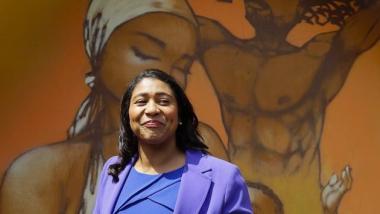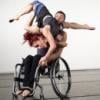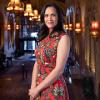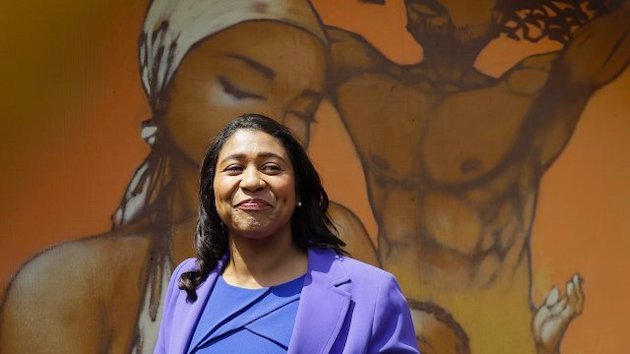
Under unprecedented challenges and historic budget shortfalls, California and San Francisco are trying to aid artists in the pandemic. It’s a near-impossible task because all people — including artists — are at the less-than-small-mercies of the federal executive and legislative branches ignoring and denying, respectively, the urgent needs of millions for basic help with unemployment, rent, and food aid.
Given the state’s 40 million and the San Francisco metropolitan area’s 3.3 million population, the news of the city’s “pilot program to provide economic opportunities for 60 visual and performance artists” seems rather minor, but let’s acknowledge Mayor London Breed’s heart being in the right place.
Good intentions are backed up by the numbers: “Our San Francisco nonprofit arts ecosystem, besides being a source of inspiration, connection, and transformation for individuals and for communities, is a billion-dollar industry employing nearly 40,000 full-time employees,” said Director of Grants for the Arts Matthew Goudeau. “These relief funds are quickly infusing cash into our local economy, supporting the most vulnerable during this unprecedented time of financial and health challenges.”
An inevitable comparison is with Angela Merkel’s initial campaign to help organizations and artists in Germany to the tune of €50 billion ($59 billion), specifically to small businesses and freelancers in the cultural, creative, and media sectors. “We know the hardships, we know the desperation,” said Culture Minister Monika Grütters. “The cultural sector in particular is characterized by a high proportion of self-employed people who now have problems with their livelihoods.”
Additionally, the city of Berlin provided €1.4 billion ($1.7 billion) in the form of individual $6,000 grants to freelancers and $17,000 to small businesses.
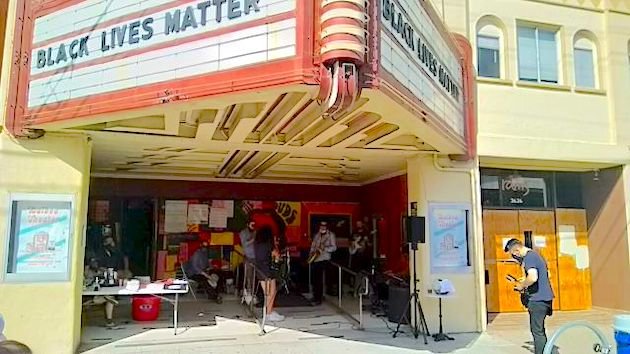
Early in the pandemic, Breed launched the Arts and Artists Relief Fund through a partnership with the Center for Cultural Innovation, which has already provided 527 individual artists and 65 arts organizations a total of $1.5 million “for their most urgent financial needs.” There are 12 additional arts organizations’ applications, with a total request of more than $425,000, under review.
The current $250,000 program is called the San Francisco Creative Corps, which aims to help performance artists and visual artists who are underemployed due to COVID-19.
Beginning with Thanksgiving weekend, actors, musicians, and dancers are being deployed as community health ambassadors to promote COVID-safe behavior in Shared-Spaces corridors, streets with outdoor restaurants, parks, and other high foot traffic areas. Thirty of the visual artists are to beautify storefronts with public health-themed murals in neighborhoods experiencing high rates of COVID-19.
“Many artists and performers are out of work due to COVID and are looking for ways to pay their bills and make a living while also pursuing their artistic interests,” said Mayor Breed.
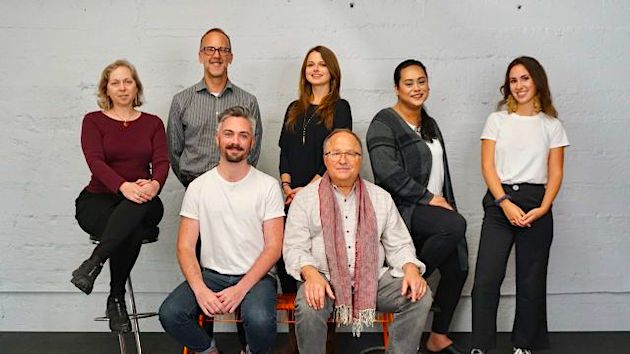
“This new program supports artists financially while also reminding community members to stay safe this holiday season. San Francisco’s artists and cultural organizations are what make our city such a vibrant place, and we need to do all we can to support them. The Creative Corps is an innovate approach to help our artists during this difficult time, and will bring some joy and fun to public spaces throughout the City.”
The City is funding the SF Creative Corps with $250,000 from the Office of Economic and Workforce Development (OEWD), and is working with Yerba Buena Center for the Arts (YBCA) and Paint the Void to administer the program. YBCA will administer the Community Health Ambassadors component of the Creative Corps program. YBCA will select artists in partnership with three local performing arts organizations: San Francisco Bay Area Theater Company, Dance Mission, and SF Carnaval. The San Francisco Parks Alliance, in partnership with OEWD and the City’s COVID-19 Command Center, will assist with assigning Ambassadors to specific locations.
As the Bay Area was boarding up both abandoned stores and to prevent window breaking in disorders (which didn’t actually happen in the wake of the election), new opportunities were found for artists: Paint the Void, is a Bay Area initiative to match local artists with boarded up businesses to create murals as a response to the “void” left behind by COVID-19.
“The SF Creative Corps is an opportunity not only to bring beauty and joy to public spaces but also to support artists during an economically challenging time while educating communities with critical public health messaging,” says Inga Bard, co-founder of Paint the Void and Art for Civil Discourse. “Art has the power to ignite public imagination towards a deeper understanding of how the virus spreads and how our actions can protect our families, friends, and neighbors.”
Restore 49 links closed businesses with local artists in an effort to reimagine boarded/shuttered storefronts through art-inspired murals.
The city’s major governmental arts organizations are the San Francisco Arts Commission and San Francisco Grants for the Arts. The latter was established through a combination of city and state legislation, and has evolved into a model of arts funding with annual revenue derived from the hotel tax. Since its inception in 1961, GFTA has distributed nearly $400 million to hundreds of nonprofit arts and culture organizations in San Francisco.
A prominent source of information about assisting artists is Intersection for the Arts, which “recognizes the immense burden COVID-19 places on artists and their livelihoods. We also recognize that the arts sector is innovative and resilient and that together we will find a way through these times.”
At the state level, the major organizations are the California Arts Council, Californians for the Arts, Center for Cultural Innovation, and Americans for the Arts — California.
San Francisco author Stephen Smoliar recalls the history of similar efforts to help artists in the Great Depression, and finds something essential missing today, especially for the performing arts:
In the early ’70s, a theater director loaned me his copy of a book about the Federal Theater Project. It turned out to be a real page-turner for me. Had it not been for the Red Scare, it could have been a model for a productive relationship between government and the performing arts.
Sadly, the Federal Theater model does not apply in today’s city and state efforts. That is because Federal Theater was not just about supporting the performers. It was also about making sure that the performers were playing to enthusiastic audiences.
The City Hall project does not get the significance of that dynamic, nor should it try to do so. The underlying problem has less to do with what the artists are doing and more to do with the lack of an ‘immediate presence of an audience.’ Until we are over the hump of COVID-19, playing to a ‘full house’ is out of the question; and that is what is most critical when it comes to getting the performing arts firing on all cylinders.”

